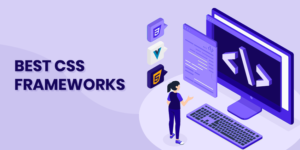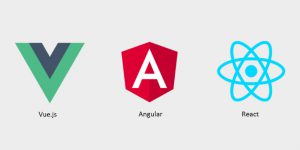
In this day and age, it is essential for your company to have a website in order to stay competitive. Having a website will help you reach a larger audience base and attract business leads in a more efficient manner. Post-COVID pandemic, it has become A MUST for every business to have its website developed professionally. The significant demand for the development of online and web applications has resulted in the rise of the Fastest web development framework.
There are numerous Popular Web Development Frameworks available. All of them are created keeping business concerns in mind.
In this blog, we will discuss everything about web development frameworks, including the 10 Best Web Development Frameworks.
So, let’s begin with what Web Development Framework is. Here we go…
Table of Contents
- What is meant by the term “Web framework”?
- Popular Types of Web Development Frameworks
- How do Top Web Development Frameworks help Developers
- Ten Easiest Frameworks For Web Development
- Conclusion
What is meant by the term “Web framework”?
We live in the internet and the world wide web era. More and more businesses now operate online or via eCommerce stores. Online success necessitates the use of a highly functional, versatile web application. And Web Development Frameworks come in handy in such a situation.
Best Web Development Frameworks make the whole web development process a lot easier for developers.
When broken down into its most basic components, a web application framework is a piece of software that facilitates the process of creating the most effective enterprise web application framework. Using the right web development framework, you can even get a highly customizable and scalable website.
All you need to do is pick the right team of developers well-versed in the top web development frameworks.
Types of Web Development Frameworks
There are two most popular Web Development Framework categories: frontend web development frameworks and backend web development frameworks.
Here is a brief description of the two:
1. Frontend Web Frameworks
Frontend web frameworks are quite popular among web developers. It is one of the most effective web application frameworks that help develop user-friendly web applications. Earlier, programmers were obliged to create manual codes in order to determine how these interactions should take place. With the introduction of frontend web development frameworks, creating code has become a breeze for all. These enterprise web application framework alleviates the difficulty of this task by supplying developers with pre-written coding that they may build upon.
2. Backend Web Frameworks
Backend frameworks, also known as Server-side frameworks are essentially libraries of server-side programming languages that can be used to assist in the construction of the backend structure of a website. Backend frameworks offer pre-assembled components that can be utilized in the creation of dynamic web applications.
The top backend web frameworks also offer assistance in the process of developing web applications. They provide developers with tools that aid in the process of developing online tasks, in contrast to other frameworks that focus only on the part of web applications that is visible to users.
Security, user permission, interaction with the database, and URL routing are all components of it.
How do Top Web Development Frameworks help Developers?
Let us take a quick look at some of the reasons why web frameworks have made it easier to construct new web apps. Here we go…
➢ Improves performance
When it comes to app development, web frameworks come in handy. They come equipped with pre-built features and capabilities to deliver exceptionally high levels of efficiency and performance. The websites that are developed using a suitable framework have a significantly increased capacity for loading content.
Eliminates the need to write lengthy codes
Frameworks minimize the need to write lengthy codes. This implies that developers no longer have to worry about adding basic functionality to websites.
➢ Streamlines the process
Frameworks streamline and accelerate the development process for developers by including tools like code generation in their feature sets. The established codebase makes it possible for developers to make updates and perform bootstrapping in an easy manner.
➢ Reduces workload
Earlier, when codes were created manually, developers used to spend a lot of time creating codes. However, with the introduction of web development frameworks, a lot of their work has been reduced.
Web development frameworks provide the tools and functions that enable developers to automate traditional chores such as URL mapping, caching, and authentication, thereby resulting in a reduction in the amount of manual labor required.
➢ Quicker web development
Web frameworks provide developers with a development environment that is quick, efficient, and responsive. This improves both the reusability and efficiency of the code. Additionally, frameworks offer sophisticated capabilities such as live reloading and hot reloading, which ultimately lead to more expedited development cycles.
➢ Reduces complexity
Modern web development framework simplifies software development and eliminates errors and problems. Because the framework handles all in-the-background tasks, such as data binding and configuration, you are free to concentrate entirely on your application.
➢ Saves time
Most web frameworks come with pre-written templates and objects that speed up the completion of programming activities in no time. These technologies help developers save time and allow them to concentrate on the most important aspects of programming, which results in quicker and more effective outcomes.
➢ Better security
Web development frameworks feature hundreds of pre-built components that are frequently updated in order to make sure that the codes you develop are entirely secure.
Continue reading for an in-depth rundown of some of the fastest frameworks for web development.
Take a look…
Ten Easiest Frameworks For Web Development
Here is our list of top 10 frameworks for modern web development:
1. React.js
At number one, we have React.js, one of the best web development frameworks. In recent years, the ReactJS framework has become increasingly popular.
Because of its robust features, cutting-edge architecture, responsive design, and user-friendly interface, ReactJS has quickly become the go-to framework for both individual app developers and enterprise organizations.
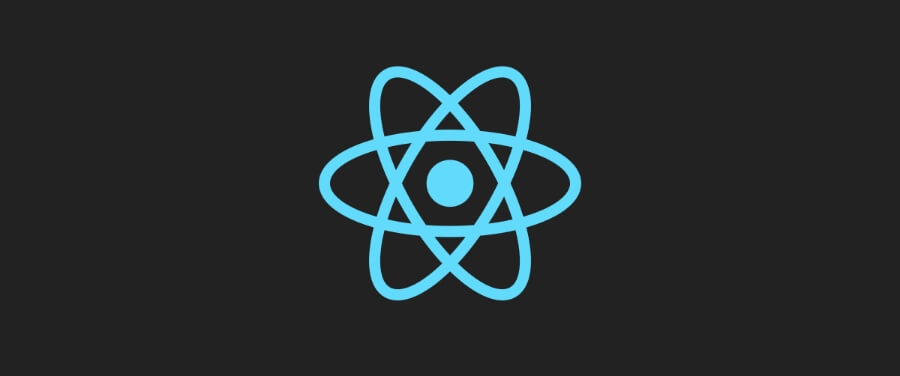
In recent years, it has developed into a potent instrument for building enterprise-level solutions. It makes development faster and cheaper by reducing the number of steps involved.
The ReactJs library is a powerful resource; thus, it’s important to work with experienced React developers on your project. A skilled programmer can create polished web apps with attractive user interfaces.
This open-source framework boasts a significantly larger number of plugins and community support. Additionally, you have the option of using JavaScript or Typescript.
In addition, the framework includes another design standard framework known as Material UI, which is also quite popular. This framework depends on Node.js for its functionality. If you’re seeking an alternative to Angular that’s not only open-source but also a little bit lighter in weight, then ReactJS is the one.
Popular website built on React.js include, Airbnb, dropbox, BBC, and so on.
2. Angular JS
This web framework, developed by Google, is widely regarded as one of the best options for frontend website development.
Angular is an open-source, JavaScript-based framework that is in high demand for the construction of dependable, high-performance web applications. Because it is simple to construct and keep its applications running, Angular has become the de facto standard for building websites and web apps.
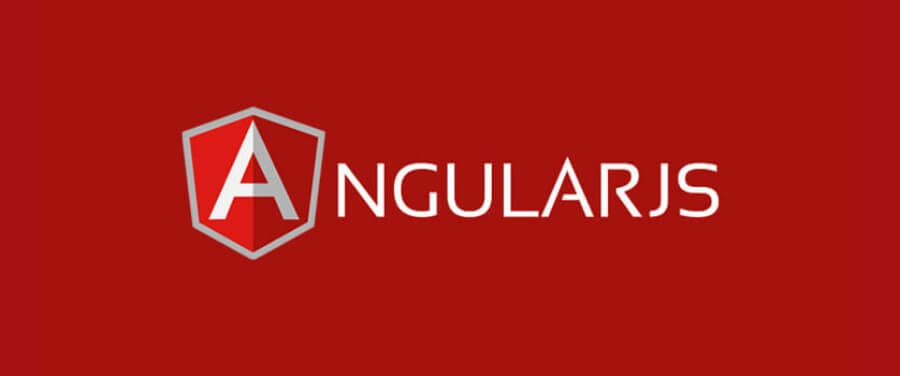
This widely used framework that Google is currently developing is undergoing rapid innovation. It offers developers a number of out-of-the-box pre-built solutions to speed up the process of creating the most effective web framework for enterprise applications.
Node.js will be required, and either JavaScript or Typescript will be used to implement this framework.
It also makes use of several other already existing technologies, such as the Angular CLI, to make the process of the generation of the modules and code packages for Angular.js developers as quick and straightforward as possible. It offers seamless integration with Angular Material.
This frontend framework is one of the best since it has the support of a significant firm as well as a sizable community.
Upwork, Netflix, and PayPal are just a few examples of some of the most prominent websites that use Angular.
Related: Hire AngularJS Coders: Tips, Pros & Cons, and Cost
3. Vue.js
Vue.js is an amazing frontend web development framework for building web applications. When it comes to the popularity of Vue.js it is comparable to that of Angular and React.js. The way it is utilized for creating stunning websites, it is sure to become one of the widely used frontend web development frameworks among developers.
When compared to Angular and React, the learning curve for Vue.js is a little bit flatter. However, learning Vue will become a lot simpler for you if you already have experience with HTML, CSS, and JavaScript.
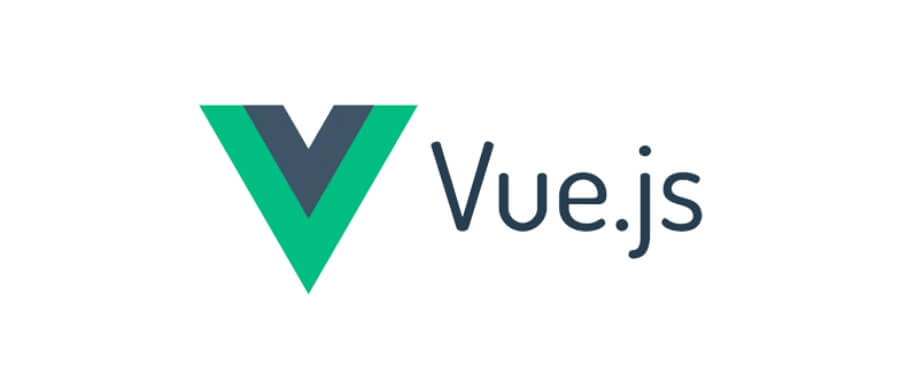
It is significantly easier to manage and does not rely on as many resources. In addition to this, it is simple to develop the system in discrete parts, either as separate libraries or as a whole framework.
Vue.js is a more robust and comprehensive framework that is relatively straightforward to integrate right in without having to do substantial rewriting if you already have an application that you want to use it with.
You will receive all of the essential elements that you desire for the website in a manner identical to that of any contemporary frontend web framework. In addition to that, it includes data binding.
Popular websites built using Vue.js include Adobe, GitLab, Trivago, Xiaomi, and so on.
4. jQuery
jQuery is a JavaScript library that is available as open source and is used for the build app user interfaces. It is a very user-friendly web development framework known for its compatibility with a variety of browsers. This framework allows for simple interaction between the various DOM elements and the syntax structure of the language.
The best thing about jQuery is that it is really simple to put into action. It is compatible with a wide variety of libraries. It is backed by a robust community of open-source developers.
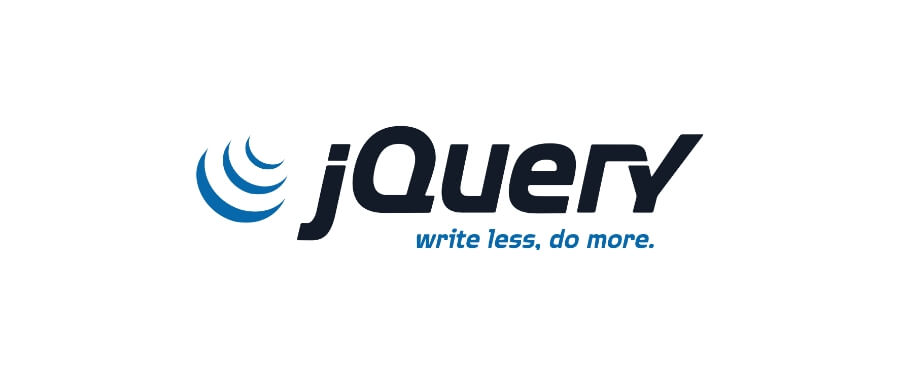
The prominence of the framework may be attributed to its capacity to impart extraordinary effects and animations upon the applications that it births. jQuery has a minimal footprint and a wide variety of plugins that may be readily integrated into its framework to provide capabilities. But the thing is that this framework only incorporates a select few features into its design.
Popular websites built on jQuery include Radioactive Crocs Club, No Fun, The Nifty Portal, and so on.
5. Ember.js
Ember is a very popular Frontend web development framework. It has repeatedly proven itself to be one of the best JavaScript frameworks.
Ember comes pre-packaged with a variety of capabilities that developers may leverage to create applications with a high level of functionality.
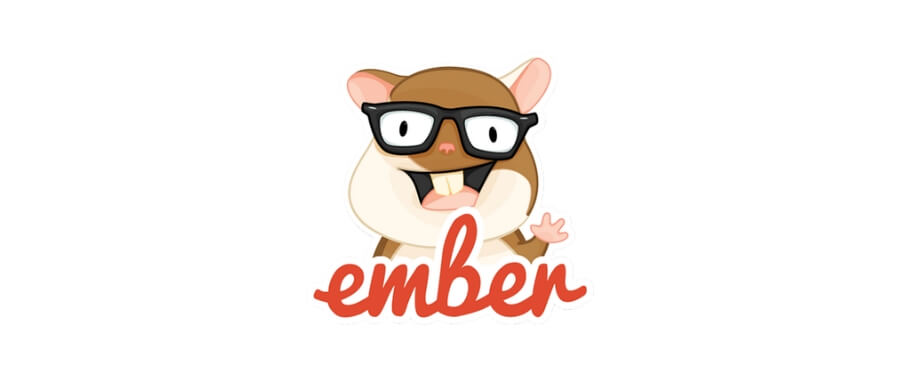
This framework makes it easier for programmers to build scalable single-page web apps by adopting a number of tried-and-true idioms, best practices, and patterns from the existing single-page-app ecosystem.
The MVMM architecture provides the foundation for Ember, which also features an intuitive user interface. To construct web applications, it does away with the need for redundant chores and incorporates some of the most effective JS practices into its fundamental design.
Similar to Angular, it allows two-way data binding. Its primary objective is to gratify the ever-increasing demand for modern technologies flawlessly.
Ember JS offers a full front-end stack, which includes a router, a services pipeline, and an asset pipeline.
Ember.js comes with Ember Inspector, a tool to debug Ember applications. It automatically updates the model whenever the application’s content undergoes a change.
This is considered one of the fastest frameworks for web development. It offers a high level of performance. Also, it provides debugging support for code. However, the learning curve for the framework is quite severe.
A variety of industry leaders, including Intercom, Microsoft, Apple, LinkedIn, Google, and DigitalOcean, amongst others, use Ember JS.
6. Ruby on Rails
Ruby on Rails is one of the oldest backend web development frameworks. It was designed specifically for the construction of application backends. Coded in Ruby and released with the MIT License, Rails is an MVC framework that preconfigures your database, web service, and web pages.
It promotes and simplifies using online standards like JSON or XML for data communication and HTML, CSS, and JavaScript for user interfaces.
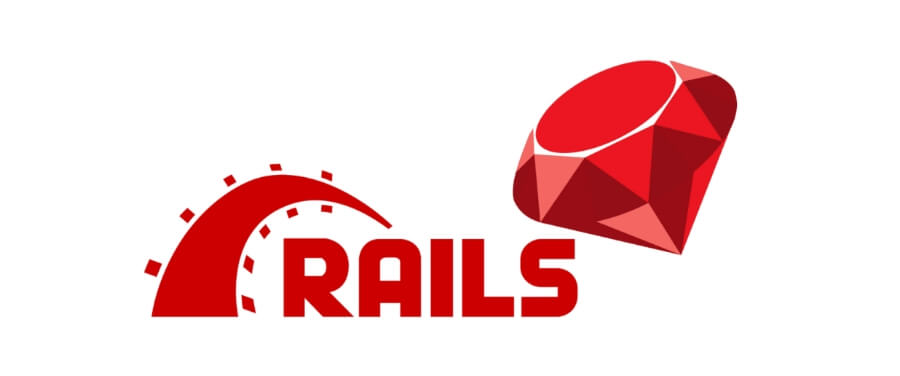
Ruby on Rails places an emphasis on the use of other well-known software engineering patterns and paradigms, such as the active record pattern, convention over configuration (CoC), and DRY.
The release of Ruby on Rails in 2005 had a profound effect on the evolution of online application development thanks to the framework’s novel capabilities, such as the automatic generation of database tables, migrations, and scaffolding of views for quick app creation.
This is one of the easiest web development frameworks that has been used to create more than 800,000 websites. The framework allows for the utilization of difficult algorithms in the process of designing functional logic for challenging business issues.
It comes with very effective libraries and tools, and it may be used to develop apps that run in the cloud.
Several popular websites, such as Airbnb, Bloomberg, Crunchbase, Dribbble, GitHub, and Shopify, are built on Ruby on Rails.
7. Laravel
Laravel is one of the most popular server-side frameworks that is built on the PHP programming language. It was developed by Taylor Otwell and is designed for the creation of online applications that adhere to the model–view–architectural controller pattern. Laravel is based on Symfony.

Laravel is an open-source web application framework that simplifies routine chores that are integral to the bulk of web development projects. These duties include authentication and routing, as well as sessions and caching. Laravel’s goal is to make the experience of application development more enjoyable for developers without compromising the capabilities of the applications themselves.
It basically operates on the concepts and paradigms that are inherent to PHP. It provides with API support and a large number of packages, both of which contribute to the adaptability and extensibility of the framework.
The backends of web applications are often designed with this framework in mind. It offers integrated services for the mail. Everything is great about this web development framework, except it doesn’t provide assistance for payment gateways, and it is unsuitable for use in the development of mobile applications.
Popular websites built on Laravel are Alison, Invoice Ninja, CheckPeople, and so on.
8. Express.js
Express.js, more commonly referred to as just Express, is a back-end web application framework that was published as free and open-source software under the MIT License. Created by TJ Holowaychuk, Express is used for building REST APIs using Node.js.
It is the back-end component of popular development stacks such as the MEAN, MERN, or MEVN stack, which also include the MongoDB database software and a JavaScript front-end framework or library.
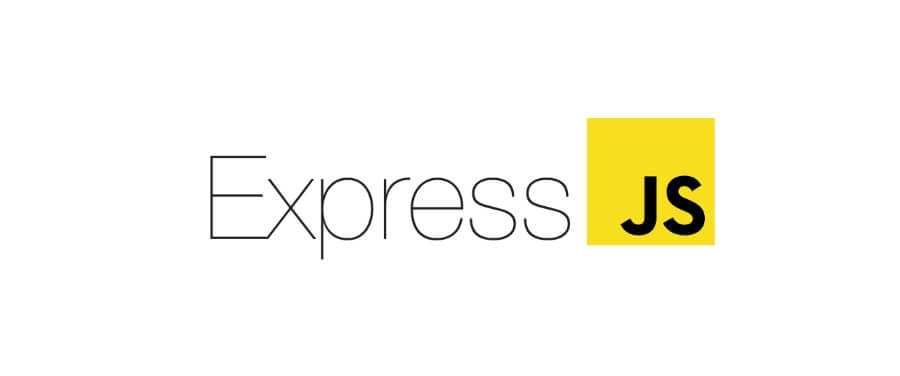
Express is rapidly becoming one of the most popular and best web development frameworks thanks to the meteoric rise in the popularity of Node.js. It is one of the unopinionated, minimal, and quick frameworks for modern web development.
It is compatible with a variety of different frameworks, including Kraken, Sails, and Loopback. It makes use of the dependable speed offered by the asynchronous version of Node.js while offering a number of essential framework functionalities without hiding any of Node’s built-in capabilities.
Perhaps the most significant limitation of Express is that it does not come with a predetermined method for carrying out tasks.
A variety of businesses, including Accenture, IBM, and Uber, amongst many others, widely use Express.js.
9. Django
Django is a web framework written in Python that is open-source and free to use. It is structured according to the model–template–views architectural pattern. The Django Software Foundation, an independent organization that was founded in the United States as a 501 non-profit organization, maintains this framework.
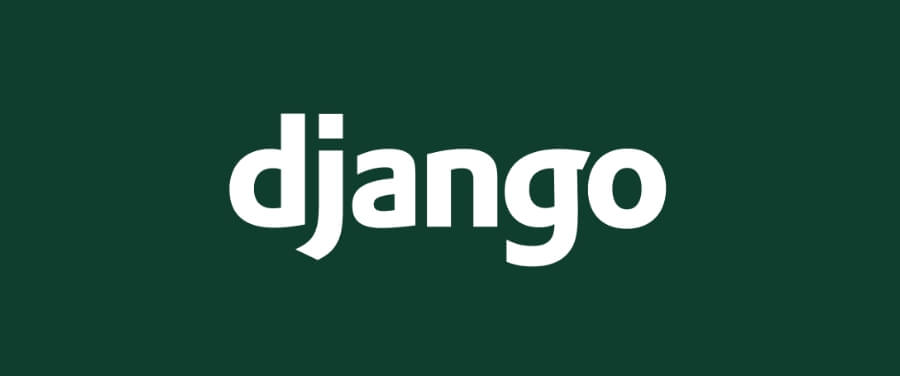
Django is proud of its batteries-included feature, which refers to a collection of functionalities that Django possesses, like authentication and messaging, among others. It adheres to the DRY (Don’t Repeat Yourself) pattern as well as the Convention Over Configuration methodology. Security is a crucial component of Django.
Django is a web framework that enables developers to create secure websites by providing them with the necessary methods and tools, as well as by implementing the security features themselves, such as blocking code execution in the template layer.
Well-known companies like Google, YouTube, and Instagram use this framework.
10. Play
Play Framework is one of the best open-source web application development frameworks that follows the model-view-controller (MVC) architectural pattern. Scala is the language it was created in, but other languages that produce JVM bytecode, such as Java, can use it as well.
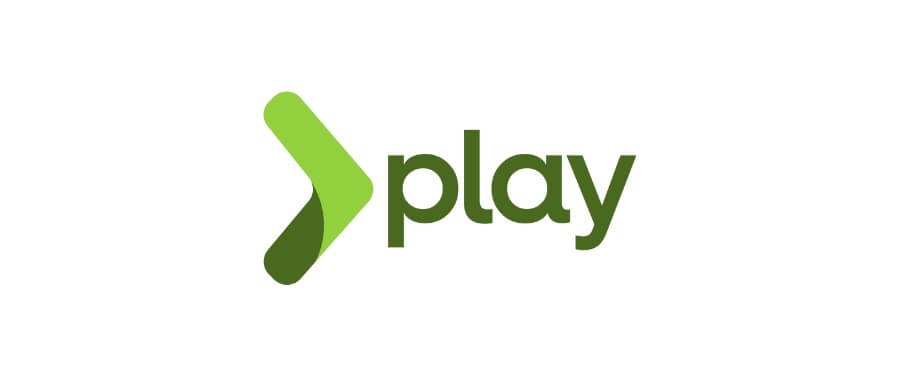
It seeks to improve developer efficiency through convention over configuration, browser-based error reporting, and live code reloading, to name a few features.
Framework 2.0 was redesigned from the ground up in Scala. Templates are written in Scala rather than Apache Groovy, and the build and deployment processes have been moved to SBT.
This Java and Scala-based framework is used for creating cutting-edge web applications. It is well-suited to the requirements of today’s web and mobile applications.
“The High-Velocity Web Framework” is what Play calls itself. Play’s architecture is small in size, stateless, and optimized for the web. This popular web development framework allows for highly scalable applications with predictable and low use of resources (CPU, memory, threads).
Popular website built on Play include, LinkedIn, Glovo, Deloitte, Flutterwave, SoFi, and so on.
Wrapping it up…
So, these are the 10 top web development frameworks that are commonly used by web developers these days.
The usage of frameworks has become ubiquitous in web development as the sophistication of the necessary technology rises in concert with users’ rising expectations of their favorite web applications. You can feature-rich and engaging web apps using the frameworks outlined above.
There are numerous web development frameworks, though the ones mentioned above are the best web development frameworks available in the market. All you have to do is to select the appropriate framework for the type of project you are working on.
You can choose the one that is best suited for your application project. Developing websites with the assistance of these well-known frameworks can greatly speed up the development process.
Aside from choosing the best framework, it is vital to pick the right team of web developers, such as WeeTech Solutions Pvt. Ltd.
How Can WeeTech Solutions Pvt. Ltd., Help?
WeeTech Solutions Pvt. Ltd. is a leading IT consulting firm in India. We have a team of seasoned web developers who can help you with cutting-edge web solutions.
We provide comprehensive IT consulting and services to ensure that our clients get the most out of our advice, research, and strategies.
WeeTech’s Web Developers create innovative and effective solutions that will set your website out from the rest.
We have created a number of web-based apps and commercial platforms, including online page programs, page layout tools for major businesses. Our team of expert web developers can help you with cutting-edge web development solutions.
Contact us for more details!
FAQs
Which framework for the building of websites is the quickest, including frontend and backend?
According to a study, React.js is said to be the fastest web development framework for frontend development. Laravel is said to be the quickest of all the backend frameworks that are currently the most popular. It may be the most recent backend framework, but it also happens to be the most superior and the quickest.
What is a web development framework?
Frameworks for web development are a set of resources and tools that assist programmers in the process of creating and maintaining websites, web services, and web applications. Some examples of popular web development frameworks include React.js, Laravel, Ruby on Rails, and Django.
Which web framework is most commonly used by businesses for the building of modern websites?
Companies almost always make use of frameworks such as React.js, Laravel, Express, and so on. These frameworks simplify the tasks and assist developers in completing web development work more quickly.

